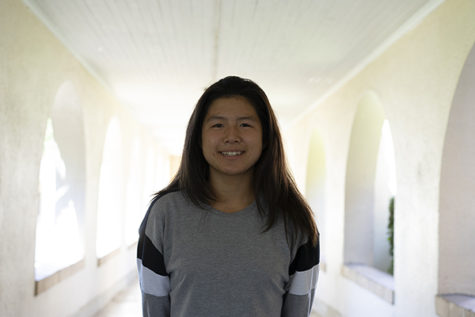The Path(s) to Success
Paly’s Wellness Center started passing out copies of Frank Bruni’s “Where You Go Is Not Who You’ll Be.” C Magazine looks at the misconceptions that many high schoolers have in regards to the college they attend and their potential for “success.”
“To all the high school kids in this country who are dreading the crossroads of college admissions and to all the young adults who’ve felt ravaged by it. We owe you, and the whole country a better, more constructive way.”
— Frank Bruni, “Where You Go Is Not Who You’ll Be”
A well-known quote states that life is about the journey and not the destination, however, in the college application process, these wise words seem to be disregarded. At Paly, there is a standard for students to feel overwhelmed by the exaggerated misconception that their future is predetermined by the prestige of the college or university that they attend after high school. This dangerous belief is a significant source of stress that can plague students’ thoughts and affect their ability to enjoy their lives throughout high school. In order to combat this issue, the Paly Wellness Center is loaning out 25 copies of Frank Bruni’s “Where You Go Is Not Who You’ll Be” to students.
After being approached by Challenge Success, an organization that partners with schools and families to broaden the the definition of the word ‘success,’ the Wellness Center began to loan out this book to students and their families. The goal is to challenge the convictions students may hold regarding their post-high-school plans.
“Many students believe that they have to go to a four year college right out of high school in order to be considered successful,” said Elizabeth Spector, the lead coordinator at the Wellness Center. “We need to look at redefining ‘success.”
Spector and the team at the Wellness Center believe that Frank Bruni’s book is a way to illustrate that there is no definite path to success, but to also give students a resource to see real-life stories of ‘untypical’ success stories when they may be feeling any pressure.
“This book really emphasizes that you don’t have to go to an Ivy League school to be successful,” Spector said. “In fact, even if you do end up at an Ivy League you may get there and realize that it’s really not a great fit for you after all.” For Spector, it’s all about what fits each individual’s needs. She encourages students to be open-minded towards all the options that are available to them and to not be afraid to look in a direction that might not be the norm.
This was also the goal of Frank Bruni, an Op-Ed columnist for The New York Times. He examines the college frenzy that seems to be an increasingly important part of a high school student’s life in his novel “Where You Go Is Not Who You’ll Be.” His novel is full of student stories that all follow a trend which Bruni claims is not unusual in the slightest; students who apply and don’t get into their dream schools then ultimately end up thriving and doing well at a lower tier university.
Bruni presents the example of a student named Peter Hart who says that he went through a “self-image transformation” when he opted for a less “showy” university, Indiana State, rather than an Ivy League. Hart found himself to be more confident at a school where, instead of fighting among the masses, he was thriving at the top of his class. Hart says this gratification made him feel more motivated to get the most out of his education and to take the first steps in planning his career. After graduation, Hart landed the same job as his high school friend who attended Yale University.
“‘I got to be the big fish in a small pond,’” Hart said. “If he wanted to, he could swim with the sharks,” Bruni wrote.
Another story follows Jenna Leahy, who felt devastated and worthless after she was rejected from every prestigious school she applied to. Now, she reflects that the experience has shaped her for the better.
“I applied for things fearlessly,” Leahy said. “Because I knew now that I was worth something, even if I wasn’t accepted.” After college, she continued on to eventually become the co-founder of a charter school for low-income families.
In the book Bruni also examined the Fortune 500 top ten companies (2014) and revealed that most of the CEO’s were not alumni from the esteemed Ivy’s but instead graduates from large state schools such as University of Arkansas, University of Texas A&M, University of Nebraska, University of Kansas, etc. Some listed did not even attend a four year university. Bruni examines the same result with U.S. Senators and professionals with successful careers in engineering, science and journalism. Public figures such as former Vice President Joe Biden and former California Governor Arnold Schwarzenegger attended the University of Delaware and Santa Monica Community College respectively.
The same has even gone for the men and women of the movies. Many well known actors and actresses have taken unconventional paths in their education and their careers to get them to where they are now. These famous names include actor Morgan Freeman, who was a graduate of Los Angeles City College, and George Lucas, creator of the Star Wars and Indiana Jones franchises. Lucas attended Modesto Junior College before eventually transferring to the University of Southern California.
As new classes of Paly students continue to embark on the college application process it is important to remember the final question Bruni asks his readers, “Does a prestigious college make you successful in life? Or do you do that yourself?”








